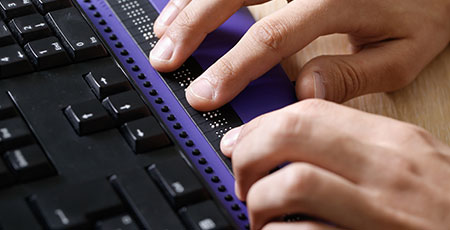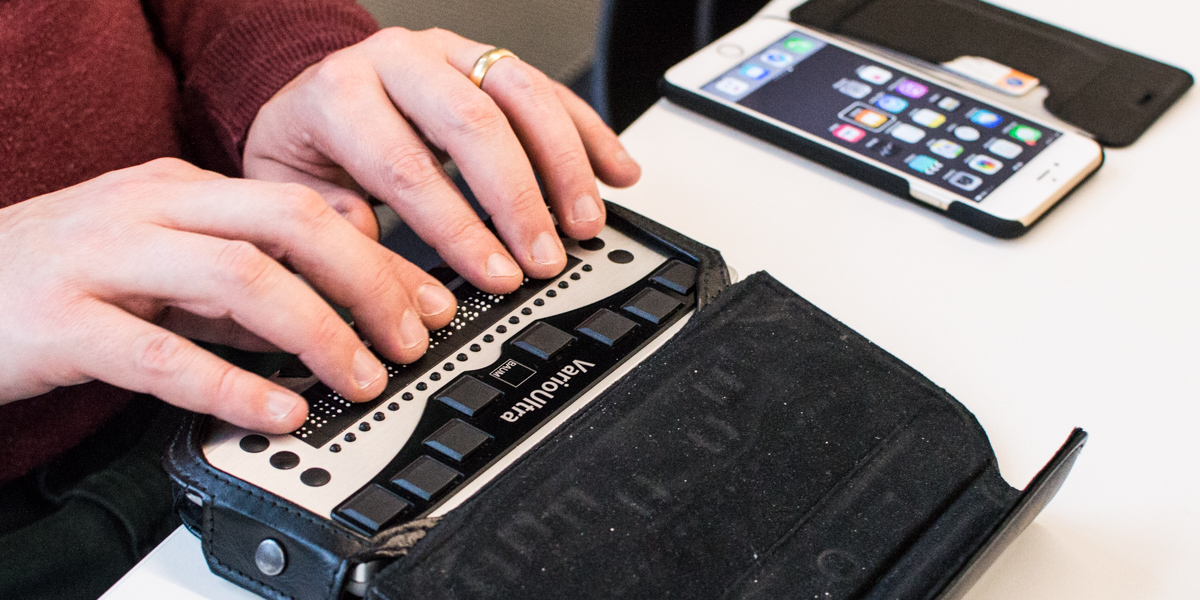Speech-to-Text Devices for Low Vision: Enhancing Convenience
Wiki Article
Empowering Freedom With Assistive Technology for the Blind
The combination of assistive technology right into the lives of individuals with aesthetic impairments stands for a considerable development in advertising independence and self-sufficiency. From cutting-edge display viewers to advanced smart walking sticks, these tools not only enhance daily navigating and interaction however also equip customers to involve meaningfully in numerous facets of life. As we check out the myriad benefits and real-world applications of these technologies, it ends up being vital to check out the hidden aspects that contribute to their efficiency and the capacity for future advancements in this crucial field.Overview of Assistive Innovation
The development of assistive modern technology is based in concepts of inclusivity and empowerment. Developments in software program, hardware, and sensory improvements supply users with choices customized to their specific requirements. From screen viewers that convert message to speech, to tactile devices that share information through touch, these tools change the means individuals involve with their surroundings.
Along with functional applications, assistive innovation fosters higher social inclusion and participation in various markets, consisting of education and learning and employment (Voice-activated assistive devices). As research study and growth remain to develop, the potential for assistive innovation to further enhance the lives of visually impaired people remains encouraging, leading the way for an extra equitable culture where every person can thrive
Types of Assistive Devices
A variety of assistive tools have actually emerged to support people with aesthetic impairments, each made to satisfy specific requirements and enhance everyday performance. These devices vary from low-tech remedies to sophisticated innovations, providing varied alternatives for individuals.Low-tech devices include magnifiers and large-print products that help in reading and writing. Braille tools, such as Braille stylus pens and slates, make it possible for responsive analysis and interaction. Orientation and movement aids, like white walking canes, aid customers browse their setting securely.
On the greater end of the range, digital magnifying systems and screen visitors supply substantial support. Electronic magnifiers enable individuals to increase the size of message and photos on screens, while display viewers transform electronic content into synthesized speech, assisting in access to details on smartphones and computers.
Smartphone applications likewise play a critical duty, offering attributes like text acknowledgment and navigating support. Wearable modern technology, such as smart glasses equipped with augmented fact, is becoming an encouraging device to enhance situational awareness.
Benefits of Assistive Modern Technology
The assimilation of assistive innovation substantially enhances the lifestyle for individuals with visual problems. These modern technologies encourage individuals same day glasses near me by promoting self-reliance, allowing them to browse their atmospheres better and carry out daily jobs with better convenience. Screen readers and zoom software allow people to access digital information, cultivating academic and expert possibilities that might have previously been out of reach.In addition, assistive devices such as clever canes and general practitioners applications give real-time navigating support, boosting wheelchair and security. This raised autonomy not only boosts self-confidence yet also urges social engagement, enabling users to participate more fully in their neighborhoods.
Assistive technology additionally assists in interaction, assisting customers get in touch with others with voice recognition and text-to-speech applications. This capacity is vital for keeping partnerships and accessing crucial details.
Additionally, the personalization options readily available with many assistive technologies ensure that users can customize tools to their details demands, better enhancing usability and effectiveness. Overall, the advantages of assistive technology for people with visual disabilities are extensive, advertising a much more comprehensive culture where everybody can pursue their aspirations and objectives.
Study and Success Stories
Highlighting the transformative impact of assistive modern technology, various instance researches show just how people with visual problems have successfully integrated these devices into their lives. One compelling instance entails a college trainee that made use of display analysis software to browse academic products and online sources properly. This technology not just facilitated her education and learning however also improved her self-confidence in taking part in conversations and group projects.One more study features an expert that utilizes a smart device application designed for navigation and item acknowledgment. By utilizing this app, he has gained back freedom in more helpful hints both his personal and workplace, permitting him to commute independently and involve with colleagues better.
In addition, a retired person shared her experience with braille e-readers, which enabled her to access a substantial range of literary works and stay linked with her neighborhood via book clubs.
These success stories emphasize the essential role of assistive innovation in cultivating self-reliance, enhancing high quality of life, and advertising social assimilation for individuals with aesthetic impairments (Screen readers for the blind). By embracing these ingenious tools, customers can get rid of challenges and take opportunities that add to their professional and individual satisfaction

Future Patterns in Assistive Modern Technology
Development in assistive technology is poised to redefine the landscape of assistance for people with visual impairments. Arising patterns emphasize the integration of expert system (AI) and device knowing, which improve the performance of tools that assist with navigating and information accessibility. For example, AI-driven applications are now qualified of translating aesthetic information in real-time, enabling users to engage with their environment a lot more separately.Additionally, the advancement of wearable modern technology is advancing rapidly. Smart glasses equipped with enhanced fact (AR) can offer audio summaries of surroundings, transforming how individuals engage with public rooms. These gadgets not just advertise autonomy but likewise foster social incorporation.
Additionally, the Web of Things (IoT) is making homes smarter, enabling smooth connectivity between assistive gadgets and everyday appliances. This connection encourages individuals by allowing voice-activated controls and automatic reactions tailored to individual demands.
Verdict
Finally, assistive innovation plays a critical role in equipping people with visual disabilities by improving their independence and interaction with their surroundings. The varied variety of devices and applications available not just promotes navigating and communication however additional resources likewise promotes social combination and chances for expert and personal development. As advancements proceed in this area, the capacity for improving the quality of life for those with aesthetic disabilities will certainly increase, fostering greater autonomy and empowerment.
Report this wiki page